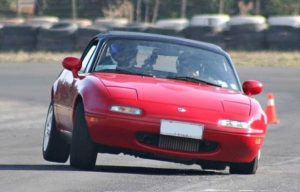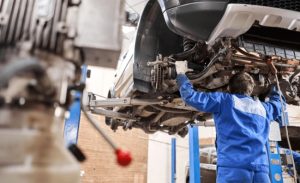Selecting the proper stabilizer bar (also known as anti-roll bar or sway bar) is more than just picking the thickest bar available. To get the best balance of handling, comfort, and stability, your bar choice must match your vehicle, suspension setup, and driving style. In this guide, we’ll walk through key considerations, trade-offs, and practical tips to help you choose wisely.

Why the Stabilizer Bar Matters
The stabilizer bar links the left and right sides of the suspension to resist body roll during cornering. It acts like a torsional spring: when one wheel compresses and the other extends, the bar twists and transfers load to maintain balance. Upgrading or optimizing the stabilizer bar can:
-
Reduce body roll and improve cornering grip
-
Enhance steering responsiveness
-
Alter understeer / oversteer balance
-
Improve chassis feel and stability
However, oversizing or mis-matching a bar can cause drawbacks like harshness, reduced independent wheel travel, or grip loss on uneven terrain. So matching the bar to driving intent is crucial.
Key Factors to Consider
When choosing a stabilizer bar, here are the primary factors to analyze:
-
Bar stiffness / diameter / cross-section
-
A thicker bar resists twist more strongly — stiffer roll rate. ([turn0search6])
-
But stiffness grows non-linearly: small diameter increases can lead to large stiffness jumps.
-
Hollow or tubular designs can save weight while retaining stiffness. ([turn0search3])
-
-
Effective lever arm and link placement
-
The length from the bar’s pivot (frame mount) to the end link (attached to suspension) determines leverage.
-
A longer lever arm gives more moment per degree of twist; a shorter lever increases roll resistance. ([turn0search4])
-
Changing where links mount may require altered geometry when suspension moves.
-
-
Balance between front and rear
-
The relationship of front vs rear roll stiffness is fundamental to handling.
-
Increasing front stiffness relative to rear induces more understeer; increasing rear stiffness can promote oversteer.
-
Many tuners design sway bar rates in percentages (e.g. 60 % front, 40 % rear) rather than absolute values. ([turn0search7])
-
-
Road and driving conditions
-
For smooth roads or track use, a stiffer bar is more justifiable.
-
For rough roads, a too-stiff bar can cause wheels to lose contact or reduce comfort.
-
Off-road, washed roads, or mountain routes may favor a more compliant setup.
-
-
Suspension and spring rates
-
The stabilizer bar does not replace springs: springs handle vertical loads, while the bar handles differential motion.
-
If springs are too soft relative to the bar, ride may be harsh; if springs are stiff and bar weak, roll may dominate.
-
Match bar to existing spring and damper setup.
-
-
Bushing, end link compliance, and geometry
-
Soft bushings absorb noise and allow micro movement, but soften the effect.
-
Rigid bushings (polyurethane, spherical joints) deliver sharper response but transmit more NVH.
-
Link geometry (angle, length) must avoid binding through the range of motion.
-
Matching Bar to Your Driving Style
Below is a table summarizing how driving style preferences should influence bar choice:
| Driving Style | Priorities | Recommended Bar Traits | Warnings / Trade-offs |
|---|---|---|---|
| Daily street / comfort | Ride comfort, light body roll, smooth driving | Moderate-stiff bar, softer bushings, balanced F/R | Avoid over-stiff bar that causes harshness or loss of compliance |
| Sport / spirited road use | Sharp handling, reduced roll, responsive feel | Stiffer bar, adjustable or hollow design, firmer bushings | May be harsher over bumps; ensure rear balances properly |
| Track / autocross | Max lateral grip, minimal roll, quick transitions | High stiffness, lightweight hollow or splined bar, aggressive mounting | Risk of grip loss over bumps, oversteer if rear is too stiff |
| Mixed terrain / rough roads | Compromise between performance and compliance | Medium bar, flexible mount geometry, perhaps adjustable | Avoid extremes that upset ride quality or suspension articulation |
How to Size a Stabilizer Bar
Here’s a simplified procedure for sizing a bar:
-
Estimate required stiffness increase
-
Determine how much additional roll resistance you want (e.g. 20 %, 40 %).
-
Use scaling: stiffness ∝ diameter^4 (i.e. a 10 % increase in diameter ≈ ~46 % stiffer) (based on torsion bar theory). ([turn0search6])
-
-
Compensate for lever arm length changes
-
If your link placement differs from stock, compute the new effective lever and adjust bar accordingly.
-
A 30 % shorter lever arm demands a bar roughly 30 % stiffer to maintain same moment.
-
-
Balance front vs rear ratio
-
Use a baseline “neutral” ratio (e.g. F/R = 60/40 or similar) and tweak based on under/oversteer behavior.
-
Test adjustments incrementally.
-
-
Consider packaging constraints
-
Physical clearance (brakes, steering knuckles, control arms) may limit maximum diameter.
-
Ensure no interference throughout suspension travel.
-
-
Select mount hardware and adjustability
-
Bars with multiple link mounting holes permit tuning without swapping.
-
Splined bars or modular arms allow future tuning. ([turn0search3])
-
Practical Checklist & Steps
When selecting and installing a stabilizer bar:
-
Measure available clearance: distance between control arms or brakes.
-
Check link mounting geometry: pivot points, vertical offsets.
-
Decide F/R stiffness ratio based on desired handling.
-
Select bar material and cross-section (hollow, solid, splined).
-
Choose bushings and link hardware (rigid vs compliant).
-
Test progressively: start with a moderate upgrade, then increase if needed.
Example: Choosing a Bar for a Sport Street Car
Let’s say you drive aggressively on twisty backroads, but still want daily comfort.
-
Your stock setup is mildly soft; you wish to reduce roll by ~30 %.
-
A bar ~1.12× diameter gives stiffness ≈ (1.12)^4 ≈ 1.57×, or +57 %.
-
You might pick a slightly smaller incremental increase (e.g. +40 %), using a hollow design to keep weight lower.
-
For front-to-rear balance, slightly favor front stiffness to maintain cautious understeer.
-
Use polyurethane bushings (medium hardness) to stay responsive yet tolerable daily.
-
Leave room for adjustment via multi-hole links to fine-tune after test drives.
Installation & Tuning Tips

-
Install one axle at a time: You don’t want to upset balance drastically in one go.
-
Start with conservative bars and test before committing to an ultra-stiff version.
-
Measure body roll (e.g. via inclinometer) before and after to quantify gains.
-
Drive in varied conditions: corners, rough patches, full load to test edge behavior.
-
Monitor for binding or noise: that may indicate misaligned link geometry.
Pros & Cons Summary
| Advantage of Matching Right Bar | Potential Drawbacks If Oversized / Mismatched |
|---|---|
| Better handling feel, reduced roll, improved predictability | Harsh ride, stress on mounts, loss of grip over uneven terrain |
| Ability to tune understeer/oversteer bias | Excessive reactive forces, increased wear |
| Preserve comfort with moderation | Over-stiff bars may hamper suspension articulation |
| Scalability & adjustability (if properly selected) | Poor part-matching may upset chassis balance |
Conclusion
Choosing the right stabilizer bar is a carefully balanced decision. It’s not about just going as stiff or large as possible — it’s about harmonizing bar stiffness, lever geometry, mounting, suspension setup, and driving style. Whether your goal is smoother handling for road driving or aggressive control for track use, following a methodical approach ensures your bar complements your full chassis and leaves you with confident, predictable performance.
If you’re ready to source high-quality components, you can
Buy Stabilizer & Components online
and select from a variety of bars, brackets, link kits, and mounting hardware tailored to many vehicle configurations.
With proper matching, you’ll enjoy sharper turns, less body roll, and a car that responds exactly as you intended — without compromising the ride quality you expect day to day.